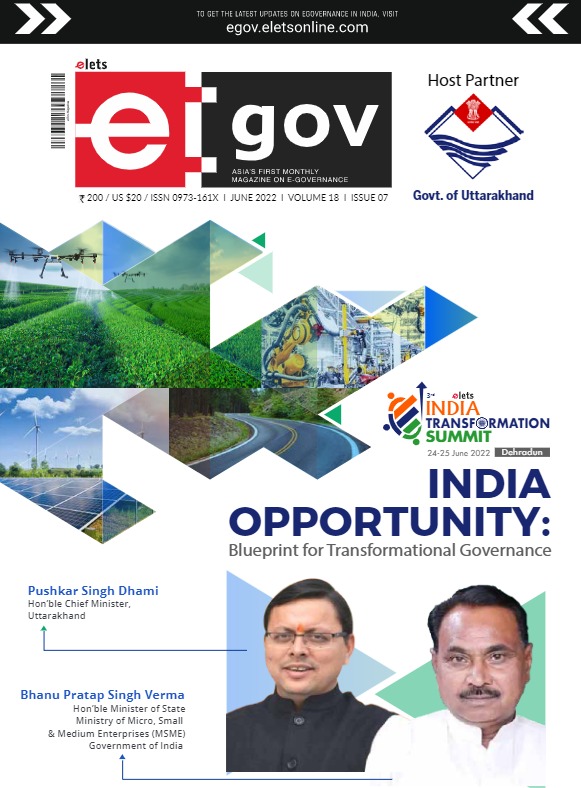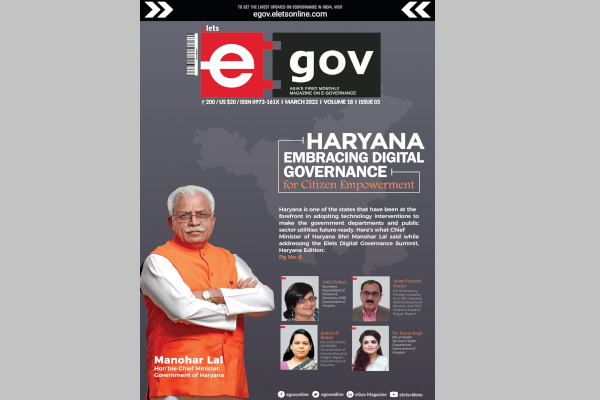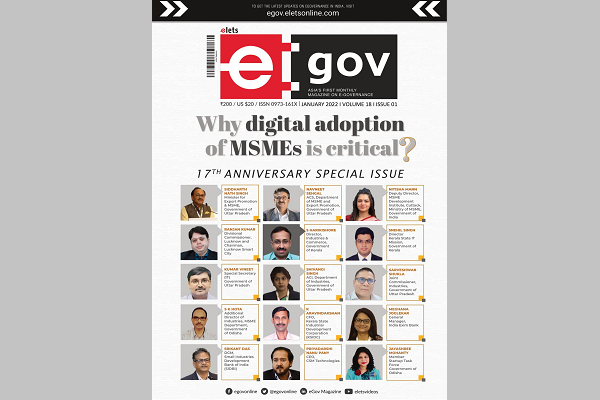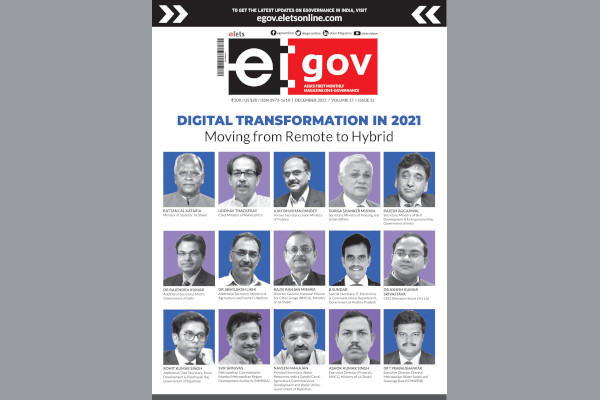
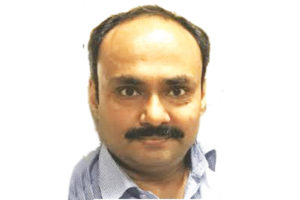 Underground power cabling has been successfully completed in Puri and similar significant temple areas in Bhubaneswar, Baripada and Sambalpur with an expenditure of around Rs 210 crore, says Hemant Sharma, Commissioner-cum-Secretary, Department of Energy, Government of Odisha in conversation with Biswajit Sahoo of Elets News Network (ENN).
Underground power cabling has been successfully completed in Puri and similar significant temple areas in Bhubaneswar, Baripada and Sambalpur with an expenditure of around Rs 210 crore, says Hemant Sharma, Commissioner-cum-Secretary, Department of Energy, Government of Odisha in conversation with Biswajit Sahoo of Elets News Network (ENN).
The Government of Odisha has committed ‘Power for All’ plan to electrify all villages of the State, what is your mission and action plan?
We have almost achieved 100 per cent village electrification in the State as per 2011 census (i.e. nearly 48,000 villages). Infrastructure strengthening works in some 20,000 odd partiallyelectrified (PE) villages as against the scope of 32,000 PE villages are under progress and the completion target is October, 2018. With regard to electrification households, by now we have completed 68 lakh households and remaining 28 lakh households (which includes approximately 13 lakh BPL households) are in the process of extending electricity connections.

Works are being taken up by Central Public Sector Undertakings like NTPC (National Thermal Power Corporation) and PGCIL (Power Grid Corporation of India Ltd) and State owned PSU OPTCL under RGGVY-12th Plan and DDUGJY (Deen Dayal Upadhyaya Gram Jyoti Yojana) programmes. Though the action plan has been drawn in tandem with 24×7 Power For All (PFA) programme, but we are aiming to achieve the desired results prior to March 2019. Additionally, adequate planning has also been done for supporting infrastructure in the Sub-Transmission, Transmission and Generation segments. Odisha has been a power surplus State for fairly longer period due to its abundant coal reserve and water resources.
What are your plans for augmentation in power production through State agencies like OPGC and newly formed OTPCL?

The cumulative installed capacity in Odisha is around 9000 MW including the share from central generating stations. Existing maximum demand of Odisha is around 4500 MW and present annual energy requirement of the State is of the order of 25,000 million units approximately. The maximum demand is expected to increase to around 5,200 MW with annual energy requirement of approximately 35,000 million units by 2020, taking into account additional energy requirement for providing 24×7 power supply to the State over the normal load growth. Planning has been done for addition of 4,900 MW capacity by 2022 (i.e. 1300 MW from Ultra Mega Power Plant at Bhedabahal, Sundargarh, 800 MW from NTPC expansion project at Darlipali and 2100 MW from IPPs).
Besides, State is implementing 2×660 MW Unit-3 & 4 expansion project of OPGC at IB, Jharsuguda. The first Unit is planned to be commissioned in this financial year. Another State owned PSU, Odisha Thermal Power Corporation (OTPC) will develop 3×800 MW coal based super critical thermal power plant at Kamakhyanagar in Dhenkanal district. Additional 2,400 MW firm power is expected to be available by 2020, supplying 18,000 million units annually. Energy Department has taken up an ambitious plan of underground power cable for safe electricity transmission in Bhubaneswar and Cuttack after Puri.
What are the project costs and how it will add efficiency towards a robust power distribution system?
Underground power cabling has been successfully completed in Puri and similar significant temple areas in Bhubaneswar, Baripada and Sambalpur with an expenditure of around Rs 210 crore. The State Capital Region Improvement of Power System (SCRIPS) envisages to meet energy needs of the State capital region up to 2030, ensuring 24×7 uninterrupted, reliable and stable power supply in the geographical areas covering under the comprehensive development plan for Bhubaneswar and Cuttack urban complex. Scope of SCRIPS includes setting up of GIS grid stations and GIS 33/11 KV S/s, underground cabling of 132 kV and below voltage level lines and conversion of overhead transmission ACSR conductors to HTLS with an estimated project cost of Rs 1,500 crore. Automation and use of Smart Grid technology will ensure more reliable, efficient and cost effective transmission of electricity even during extreme weather conditions.
Odisha has also created GEDCOL in addition to OREDA for producing and harnessing green energy in the State. How is it aligned with the National Solar Mission?
GEDCOL has been created as a 100 per cent subsidiary company of Odisha Hydro Power Corporation Ltd. (OHPC) in the year 2013. It is functioning as the State Nodal Agency for development of all on-grid Solar and Hybrid power projects of 1 MW and above capacity. OREDA is the nodal agency for all other Renewable Energy projects except Small Hydro Electric projects, which is being looked after by the Engineer-in-Chief (Electricity).
Energy Department has notified the Odisha Renewable Energy Policy, 2016 in November, 2016, envisaging the overall renewable capacity addition target as 2,750 MW by 2022, as part of the national target of 175GW Renewable Energy capacity by 2022. GEDCOL has commissioned a 20 MW Solar power project at Manamunda in Boudh district under NSM (Phase-II, Batch-I).
GEDCOL is also implementing 1000 MW Solar Park in the State (in two phases) under the UMSPP scheme of MNRE. In the Rooftop Solar segment, 4 MW Rooftop Solar project is nearing completion on the Government buildings in Bhubaneswar and Cuttack and survey has been completed in 15 other towns for around 18 MW Rooftop capacity. Several other small hydro and solar activities are also in offing, which will be taken up by GEDCOL in the State. The company has gained first-hand exposure by venturing into development of several projects and we are quite hopeful that the company will strive towards newer heights in the on-grid solar space of the country.
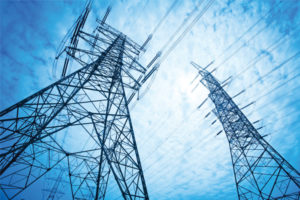 What are State’s plan to increase efficiency and profitability of Discoms?
What are State’s plan to increase efficiency and profitability of Discoms?
Being a rural population dominated State, achieving quick profitability of Discoms is very challenging. However, the department is taking up multifaceted programmes for reduction of AT&C loss and thereby increasing the efficiency of utilities, viz, 100 per cent LT billing, feeder metering, distribution transformer metering and energy audit, HVDS and LT AB cabling, installation of smart metres for all consumers above 500 kWh/month (except agricultural category consumers), LED distribution and installation of energy efficient pumps, KPI based performance monitoring and management system of loss reduction and meter replacement, ERP for metering, billing, collection, inventory and accounts management, centralised customer centres, new avenues for consumer bill payment (i.e. e-payment through net banking, credit/debit card, kiosks at banks and post offices, village panchayats, mobile collection vans etc.) and capacity building and consumer awareness campaigns etc.
We are planning for an overall loss reduction of 4-5 per cent per annum at the State level as per the 24×7 Power For All joint statement.
Have you embraced IT and Internet of Things (IoT) technologies, smart metres and electricity distribution automation system to optimise the power distribution system?
We have implemented need based IT-based applications in the distribution utilities. The in-house IT cells have developed and successfully implemented software modules and mobile applications for new connection, meter installation and meter seal management, spot billing system, android based mobile photo billing, payment collection system including online modes, data centre management, mailing service, training and development module and recruitment web-portal etc, which have yielded the desired results.
Besides, a new app is under development for electrical safety, to minimise accidents. The State utilities have also implemented AMR for all consumers above 10 KW, computerised cash collection centres, installation of prepaid meters for government consumers and smart meter pilot projects in selected areas.
Energy tariffs are very competitive and cheap in Odisha in comparison to other States. Does the energy department have any specific industry tariffs or packages for industry clusters?
Odisha’s tariff structure is at a lower side when compared with the national level statistics owing to good HydroThermal mix. At present, the ddepartment is not resorting to specific tariff subsidies to the industry clusters, rather facilitating various fiscal and other incentives and concessions through different sectoral polices of the State Government like SEZ, IPR, ICT and ESDM and Renewable Energy Policy etc for promotion of sector specific industries.
Massive financial assistance is being provided for upgradation of transmission and distribution systems, which is primarily in the nature of capital subsidy to keep the tariff low for all categories of consumers.
What other special initiatives have been undertaken by the Energy department in the State which will benefit the consumers in the last mile and increase productivity of the sector?
The State is prone to natural disasters like cyclones and floods, which affects the power system infrastructure majorly. In addition to integrate the desired resiliency in the power system along with enhancement of quality and reliability index of power supply, the State has planned to take up several special automation and modernisation projects like Radial to Ring Conversion Project (RRCP) with an aim to reduce interruptions by providing multi source connectivity, Disaster Resilient Power System (DRPS) to reduce damages to the transmission and distribution infrastructure during natural disasters, Disaster Response Centre (DRC) for quick restoration of power supply after natural disasters, Smart Grid technology to ensure more reliable, efficient and cost effective transmission of electricity by introducing new concept like advance metering infrastructure (AMI) for metering and billing automation, Geographical Information System (GIS) for asset mapping, Supervisory Control and Data Acquisition (SCADA) for system automation and remote controlling, use of Optical Fibre Composite Overhead Ground Wire (OPGW) in place of earth wire for establishing easy and faster communication network and lightning protection, fault locators and audit metering etc in the system.
Apart from above, the State is also envisaging to implement fully functional enterprise resource planning (ERP) system in the power sector organisations for smoother operation, better management and increasing efficiency. Collectively, the estimated expenditure for all these special interventions would be around Rs 2,500 crore. The State has made adequate planning and resource allocation to make the power sector environmentally and commercially sustainable and providing quality and reliable power supply to the last mile consumers with no discrimination among rural and urban areas in the coming years.
Be a part of Elets Collaborative Initiatives. Join Us for Upcoming Events and explore business opportunities. Like us on Facebook , connect with us on LinkedIn and follow us on Twitter, Instagram.




